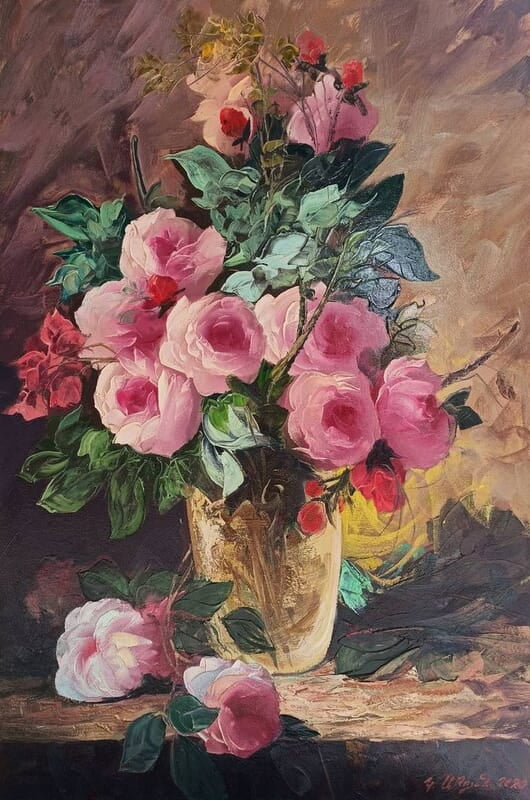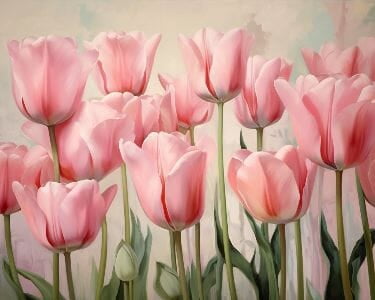
Pink and White Roses
A painting of roses can be a captivating and elegant work of art, rich with symbolism and visual appeal. Here’s a detailed overview of what you might find in a rose painting
Customize
Product Details
1. Subject and Composition:
- Focus on the Roses: Roses are typically the central element of the painting. They may be depicted in various stages of bloom—from tight buds to fully open flowers—to capture different aspects of their beauty.
- Arrangement: The roses might be painted as a single flower, a bouquet, or as part of a larger floral arrangement. The composition could be formal and structured or more casual and naturalistic, depending on the artist’s intent.
- Background: Backgrounds can vary widely—from a soft, abstract wash of colors to a detailed garden scene. The choice of background can either highlight the roses or provide a contrasting setting that enhances their presence.
2. Color Palette:
- Rose Colors: Roses come in a spectrum of colors, including classic reds, pinks, whites, and yellows. Each color has its own symbolic meaning, and the artist might choose specific colors to convey certain emotions or themes.
- Leaves and Stems: Green hues are used for leaves and stems, with varying shades to depict depth and realism. The greens might range from deep forest greens to lighter, more vibrant shades.
- Background Colors: The background can be complementary or contrasting to the roses. Soft, neutral backgrounds might make the roses pop, while more vibrant backgrounds could create a dynamic and lively effect.
3. Texture and Technique:
- Petal Texture: The texture of the petals can be rendered with various techniques. Artists might use delicate brushstrokes for a smooth, realistic look or thicker, more textured strokes for an impressionistic style.
- Light and Shadow: Effective use of light and shadow helps to create depth and dimension in the roses. This can emphasize the curves of the petals and the intricate details of the flower.
- Detailing: Fine details, such as the veining in petals or the texture of the rose’s center, can be highlighted through careful brushwork or layering of paint.
4. Symbolism:
- Meaning: Roses are often associated with love, beauty, and passion. Different colors can convey different meanings—red roses for romantic love, white roses for purity, yellow roses for friendship, and so on. The painting might use these colors to evoke specific emotions or themes.
5. Artistic Style:
- Realistic: In realistic rose paintings, the artist strives for accuracy and detail, capturing the true essence and delicate features of the roses.
- Impressionistic: Impressionist paintings of roses might use loose brushstrokes and vibrant colors to capture the overall mood and feeling of the flowers rather than their exact details.
- Abstract: Abstract rose paintings might emphasize shapes, colors, and textures over realistic representation, focusing on the emotional or aesthetic impact of the roses.
6. Frame and Presentation:
- Framing: The choice of frame can complement the painting’s style. Classic wooden frames might suit traditional or realistic paintings, while minimalist or contemporary frames might enhance modern or abstract works.
Overall, a painting of roses can range from highly detailed and realistic to loose and abstract, reflecting the artist’s vision and the inherent beauty and symbolism of the flower. Whether used to convey romance, admiration, or simply the splendor of nature, rose paintings remain a timeless and cherished subject in art.

